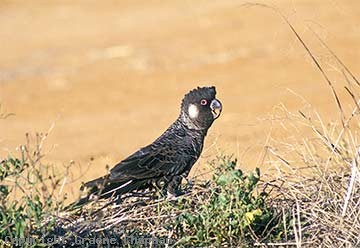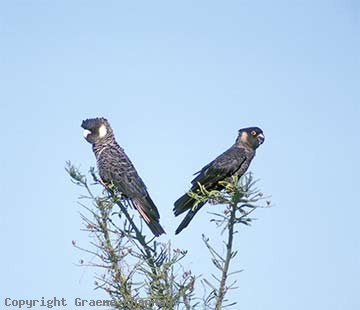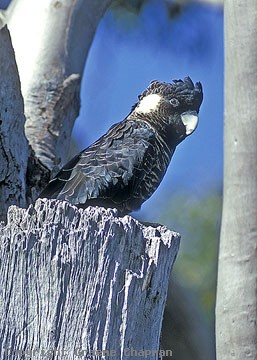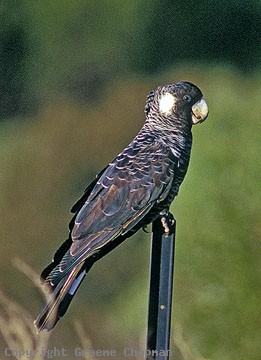
Named in honour of Ivan Carnaby, respected W.A. ornithologist who first suggested there was more than one sort of White-tailed Black Cockatoo back in the 1930's. Research since that time (see under Baudin's Black Cockatoo) has shown that the birds once all regarded as White-tailed Black Cockatoos actually consisted of two sibling species with quite different habits and ranges.
Carnaby's or Short-billed Black Cockatoo has a much wider range than Baudin's; they extend inland into heathland (the famous W.A. wildflower country) to access their main food resource, a wide range of woody fruited natives, largely in the family Proteaceae. Sadly, this vast tract of country has been severely depleted by the spread of the great W.A. wheat belt. In recent times, one of the efficiencies of broad scale agriculture, aerial spraying, has even resulted in the disappearance of most of the remnant native vegetation along the roadsides, in many areas the last remaining food resource of Carnaby's Black Cockatoos. In the space of 50 years a bird once regarded as a pest in pine plantations is now classed as endangered. More recently there has been a move to remove the pine plantations along the coast, thus eliminating yet another stable food resource.
In certain large national parks, such as Fitzgerald River and Watheroo, quite large flocks of Carnaby's B.C. can still be found at certain times of the year, however there is no guarantee that they can find sustenance there the whole year round. Many birds in W.A. including Carnaby's Black Cockatoo, undertake quite long seasonal migrations in search of food and relief from the extremes of the W. A. climate.









